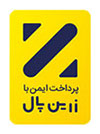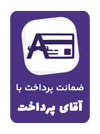How to add English as a third language for a 1-year-old? ResolvedLocked
Question
Dear coaches,
Thank you for the great website and taking time to help parents. Reading your answers to others’ questions gave me some general ideas about my concerns but still I have some topics in mind to ask you. So first I give a summary of our situation.
I am Iranian, and Persian is my mother tongue. My husband is Turkish. and Turkish is his mother language. We live in Turkey and know each other’s languages + English. My husband is more fluent in my language than I am in his. We communicate in Persian mostly and sometimes mix it with English.
Our 1-year-old daughter has a very good grasp of Persian since I have been staying home with her and always spoke Persian, in addition to English nursery rhymes and watching baby shows on TV in English. My husband speaks Turkish with her in the evenings. She understands most of my talks to her, good Turkish and the action parts of some English songs I sing for her.
After reading some articles online about the importance of the first two years in language learning I put away my doubts and started to speak English with her a couple of months ago. Her initial reaction was fear which is normal. She is usually afraid of new things. She is less afraid now, but I did feel strange too. At first, she obviously didn’t understand my talks even if I repeat what I said, and it made me feel like there was a little distance between us.
My daughter has made great progress in understanding English along with Persian. I have chosen her room as the place to talk in English to her and outside the room we speak my mother tongue. I find it easier on me too. I need improvement in talking the language, so it makes topics more predictable. We spend one third of the day in the English room. She doesn’t talk yet, but she follows the instructions and remembers the words that I only repeat a few times.
The other important piece of info is that I am going to start working soon. Luckily for us I teach English to pre-schoolers, ages 3–6, four hours a day as a part time job. I have to speak some Turkish till they get used to the new language which takes almost three months. Apart from that it’s all playing, singing, dancing in English. My daughter will be coming to the nursery with me and I am planning to take her to lessons with me as long as she is not bored. Otherwise she will be staying with other people who only speak Turkish.
About English I would like to add that it is definitely the prestige language here and I guess it will be very useful since when she is big enough, she will most probably refuse to speak Persian around others. It draws a lot of curiosity and people will keep asking questions the same way they do to me now. Unfortunately, we live in a region which does not get many foreigners. We can speak in English in front of others as it has a good connotation and my daughter will feel it soon too.
So, my questions are these:
- How should I approach the two languages? Should I divide my time between them? She doesn’t have any other source of Persian by the way, apart from me, my husband (when we talk to each other) and books and we visit grandparents just once or twice a year.
- Will she pick up my mistakes in English too? I am good in speaking but not perfect.
- I speak English as long as she is not reacting and as soon as she gets afraid switch to Persian. . I have chosen her room as the place to talk in English to her and outside the room we speak my mother tongue. I am not concerned about mixing languages however. Should I be?
- Should my husband, who tries to speak Turkish, switch to English in the room or keep speaking in Turkish?
- I would like to know your opinion about the amount of watching tv in the targeted language? Is there any strict rule? My daughter watches something around three hours a day which is baby TV in English and nursery rhymes on YouTube in intervals. It doesn’t seem to do any harm to her. I am with her most of the time.
- Also, in what language is it better to talk about what we’re watching on TV? The TV is in the living room and I am usually confused which language to talk about programs.
The last thing to mention is that due to my job I have prepared a lot of toys and crafts and a lot of songs for almost every word or sentence in beginner’s level in English. I also made Persian fabric alphabets and am going to continue this kind of preparations as soon as she lets me. I would be very grateful to hear your advice on this.
Thank you very much in advance for your time and attention”
Answer
Thank you for sharing your family language story and your questions. From the information you have provided I can tell that you have been doing a beautiful job speaking Persian, your native language, to your daughter. At the same time, you have exposed your little girl to age-appropriate English materials. Other than that, your husband speaks Turkish to your young child in the evenings! You have set up a home environment with three languages and there is a routine. Congratulations!
Before I touch on your questions, let’s take a look at your current language environment.
Family language background:
Mother’s native language is Persian. Mother also speaks Turkish and English.
Father’s native language is Turkish. Father also speaks Persian and English.
Language environment outside of home:
Community language is Turkish.
Child age: 1 year
Current language environment for your child:
Your daughter has been receiving consistent language input in Persian from you. You are the sole resource of Persian.
Your child has been exposed to English language nursery rhymes and television shows for babies. You have started speaking English to your daughter recently.
Your husband speaks Turkish to your daughter in the evenings. Turkish is the community language. Your daughter hears Turkish when she is out in the community.
Target languages: Persian and English.
From the analysis you can see that Persian has the highest exposure to your daughter with your consistent input at this time. Turkish has the 2nd highest exposure. And, English comes in third since you are just starting out. I want to point out that the exposure to Turkish will increase over time with your daughter’s age, her interaction with peers outside of home and schooling.
Your focus on Persian and English at this stage will cultivate a strong foundation for your daughter. You are also setting up a family language environment that embraces Persian and English.
Answer to question 1
Family Language Strategy
You talked about how to approach and handle two languages, Persian and English in your message. Here is my recommendation:
Persian
You are the main language source of Persian for your daughter. Before adding the English, it was an OPOL, One Parent One Language approach. You spend the majority of time speaking, reading, singing, and playing in Persian with your daughter. You can add the Persian fabric alphabets you made to the daily language routine. Let your daughter touch the alphabet when you say each letter. Play peekaboo with the fabric alphabet. Make it a game. Playing is learning!
In addition, you can expand your daughter’s Persian language exposure by connecting with grandparents and relatives. This is when technology can come in and help. You can schedule weekly video calls with grandparents, relatives, and cousins. The calls will be in Persian and it will connect the Persian language and the culture. Let the relatives show your young daughter the food they are eating, the toys they are playing, the books they are reading, and so on.
Another tip is that grandparents and relatives can read books in Persian and record it in audio format or video format for your daughter. Reading is always on top of my list when it comes to language acquisition. Children love stories and they love listening to them.
When you have support from the family it makes a big difference on the multilingual parenting journey.
English
I was delighted to read that you also have started speaking English to your daughter at certain time of the day. Adding English to your family language routine is like creating a space or time block for English. With her room as the English room, you are applying the Time and Place approach to this newly added language.
Since English is a new language for your little one it is very important to have a good transition, so your daughter feels cosy, comfortable and joyful when you speak English to her. Use visual tools like word wall, flashcards, posters, books, and toys to help her understand what you are telling her in English. As you have noticed, when you see that she can understand you will feel more comfortable and relaxed as well. The feeling is mutual.
When you say, “It’s a brown bear.” you point to the picture of a brown bear. When you say, “It’s a yellow duck.” you show her a picture or give her a yellow duck toy. You want to make sure that you are providing her the language input that she can comprehend.
Play English nursery rhymes, children’s songs, or lullabies in the background during English play time. Music is relaxing, and it helps with the flow. Read books in English every day. Read-aloud is wonderful for literacy building for young learners.
Your English-teaching job provides your daughter an English community with bigger kids who are learning English. It is a bonus! You are adding more English exposure to your little one’s daily routine!
I am impressed with your preparation for your students in your program. You mentioned that you have collected toys, crafts, and songs for introducing an abundance of English words and sentences at the beginner level to your students. All the props, crafts, and songs are for helping students understand what you are teaching them, no matter, it is a word, or it is a sentence.
That is exactly what you can do at home with your daughter. You can pick and choose the items in your collection that are suitable for her age group.
Answer to question 2
Non-Native Speaker
You wonder if your daughter will pick up your mistakes in English. I believe you know that there are many great non-native English teachers who are teaching English. There are also monolingual parents who are teaching their children a second language. The key is to be confident on this multilingual journey and to know when and where to find professional assistance as the kids grow.
I helped my kids learn Spanish as a non-native Spanish speaker. I used books, audio and video resources at beginning. Later, a friend and I organized a small Spanish playgroup and we hired a native-speaking Spanish tutor for our kids. Both my friend and I are non-native Spanish speakers, but we enjoyed helping our children learn Spanish.
You are in good hands with all the English teaching resources (online and offline) that are available to you and your daughter. Read, read, and read more! Read English broad books and picture books to your daughter every day. Your daughter will learn from the stories and learn from you.
Being a non-native speaker does not need to be a concern. Being a non-native speaker can make you more creative and productive on this journey. Surprised?
Answer to question 3
Mixing Languages
You asked if you should be concerned about mixing two languages. From the information you have provided I can see that you are consistent with Persian. As you are introducing English to your daughter you care about how she feels about the new language. You would switch back to Persian when you detect any “concerned” sign on your young daughter. As you add more visual tools to the English play time with your daughter she will feel more and more comfortable and playful. I don’t see a concern with mixing languages.
When your daughter is having a playful time with the target language she will come back for more. She is bonding with you and learning from you. Multilingual parenting needs creativity, flexibility, and consistency.
Answer to question 4
English Room
You have a dedicated room for English. Your daughter’s room is the English room and you only speak English with your daughter in her room. If your husband is comfortable speaking English to your daughter in her room he can definitely be a part of your English team.
However, please handle this with special care. This should be a mutual decision between both parents so there is no stress. Multilingual parenting is a journey and it needs a joyful and loving team.
Answer to question 5
Screen Time
Being exposed to a screen for three hours a day for a 1-year-old toddler is quite a lot. I would recommend decreasing the screen time. Instead, you can use the audio resource of the TV programs or YouTube videos to interact and engage your daughter without having her sitting in front of the television. You can use the video resource to create fun activities for her and play with her in English.
Your interaction with your daughter is very important for language development. Language is communication and interaction. American Academy of Pediatrics recommend “parents prioritize creative, unplugged playtime for infants and toddlers. Some media can have educational value for children starting at around 18 months of age, but it’s critically important that this be high-quality programming […]. Parents of young children should watch media with their child, to help children understand what they are seeing.”
Your conversation with your toddler in English is a back and forth interaction even though she is not talking yet. You talk to your child and she follows your direction. That is like a conversation. She is communicating with you with her movement or action. Your talk with her is language input and it is quality language input.
Answer to question 6
Language during screen time
One way to do this is that you can speak the same language of the programming. If the show you are watching with your daughter is in English you speak English. If it is in Persian you speak Persian. Living room is the common area and you can have some flexibility to fit the need of family time.
If you have any further questions or need clarification, please feel free to add a comment below. Wishing you the best on the multilingual parenting journey!

 Persian
Persian  English
English  Arabic
Arabic 


